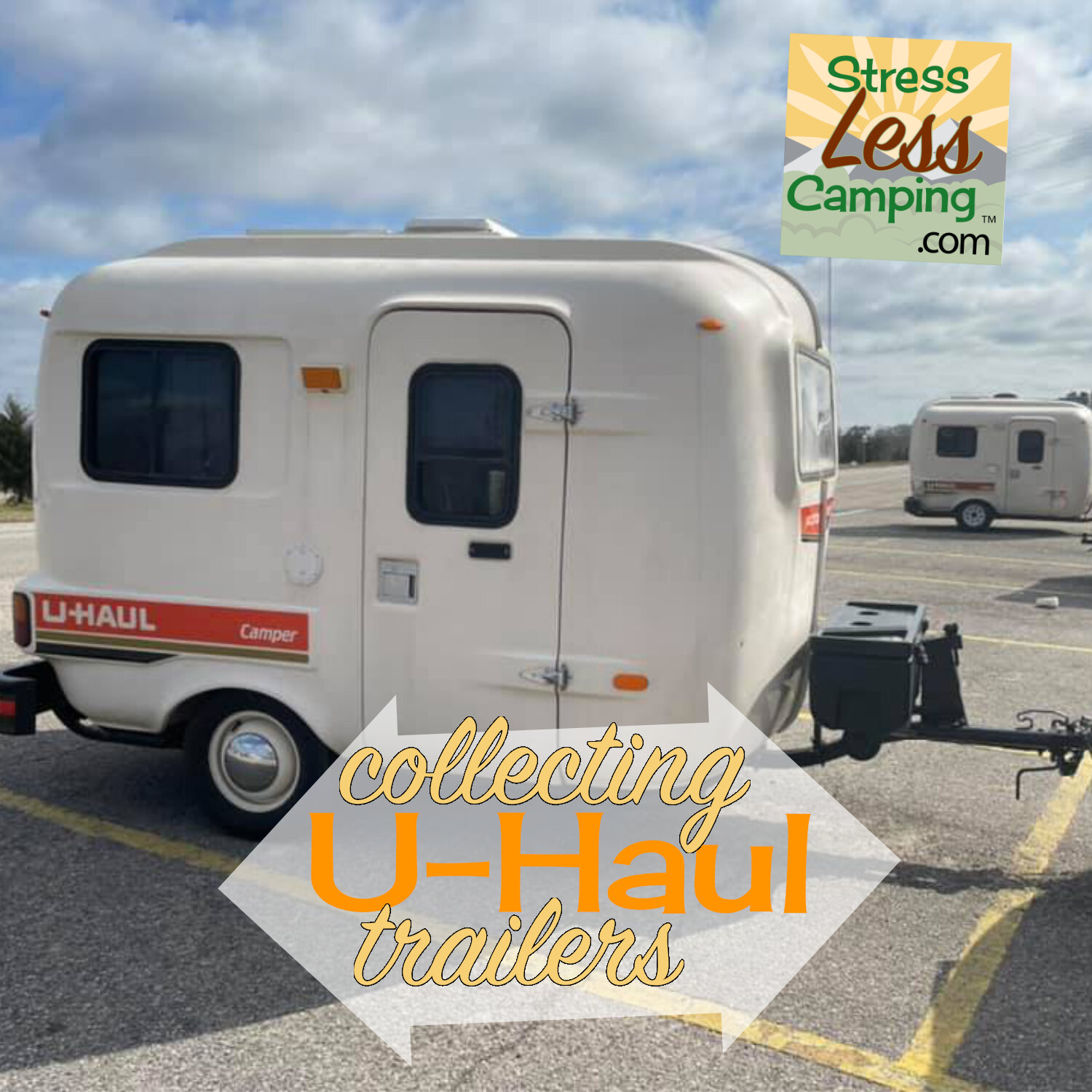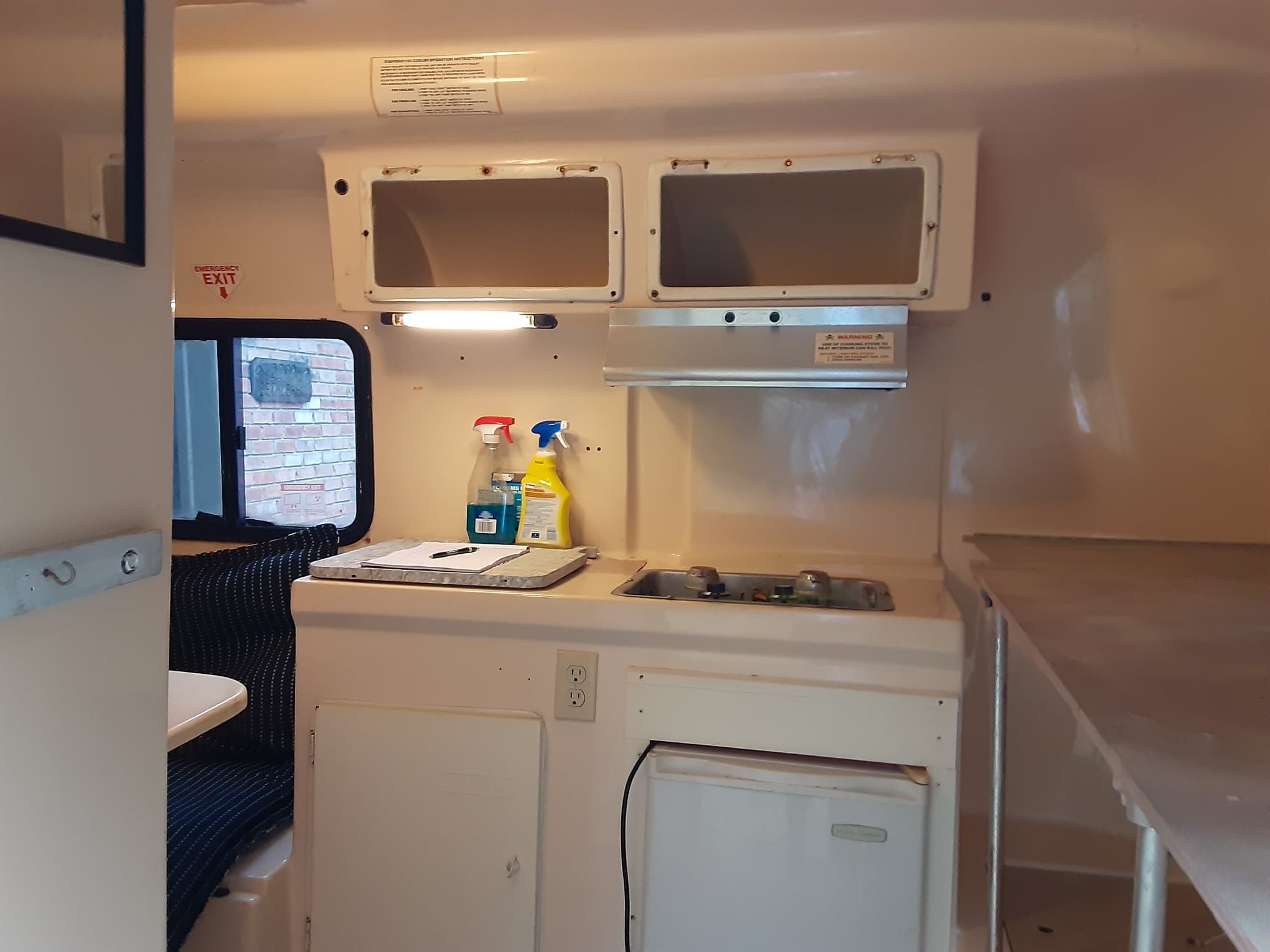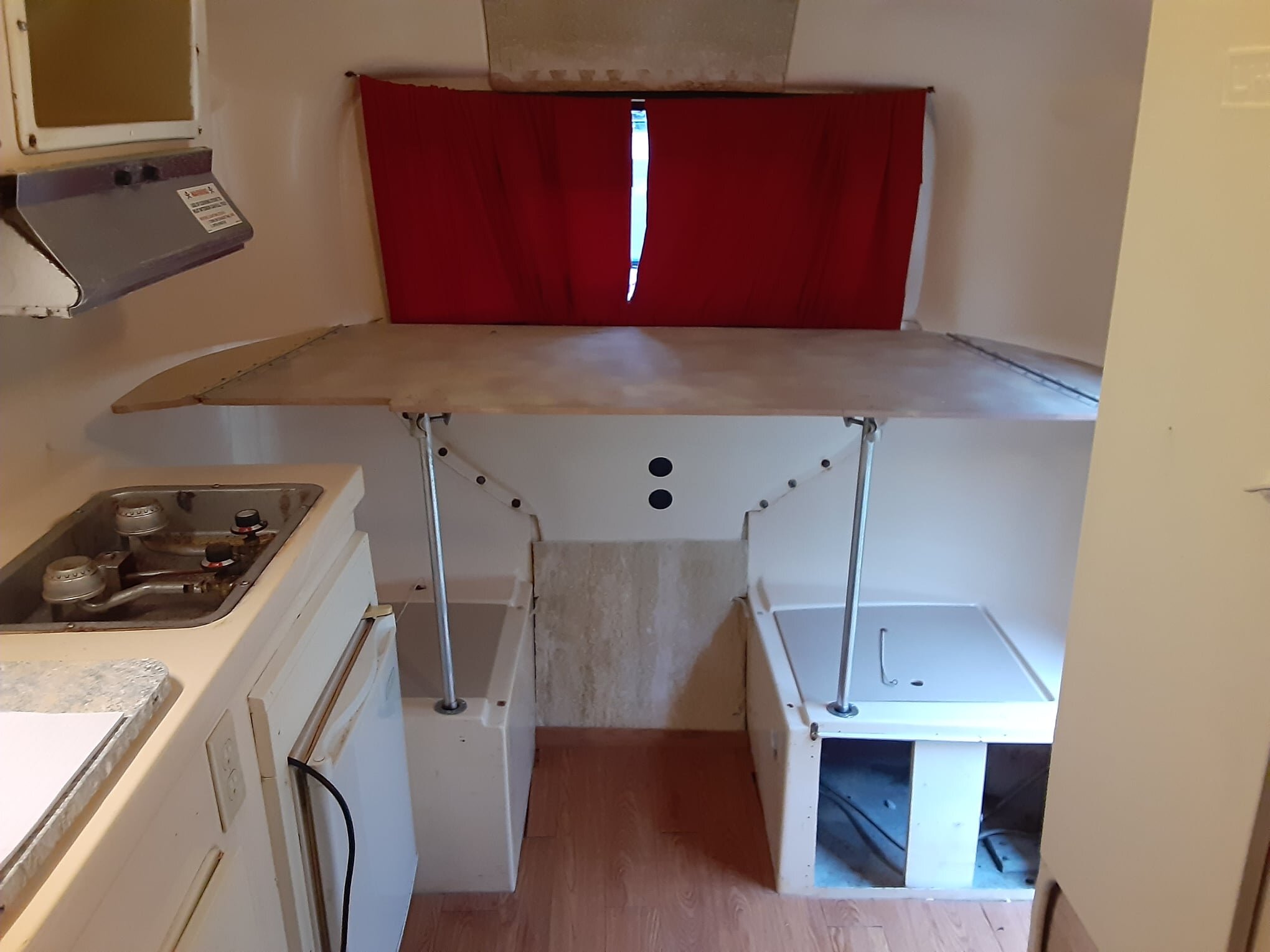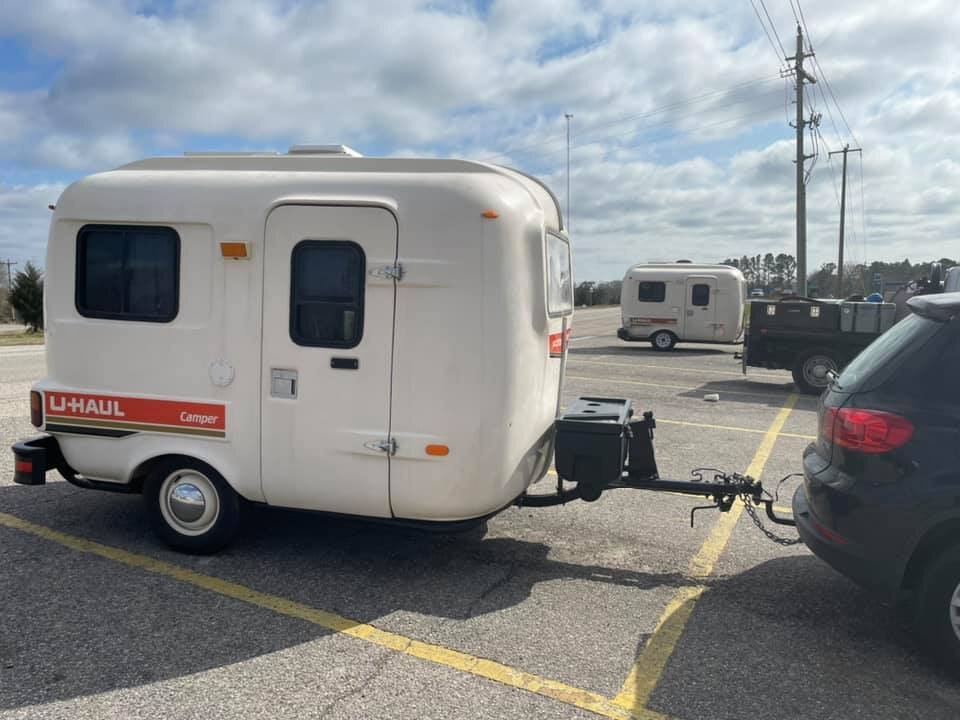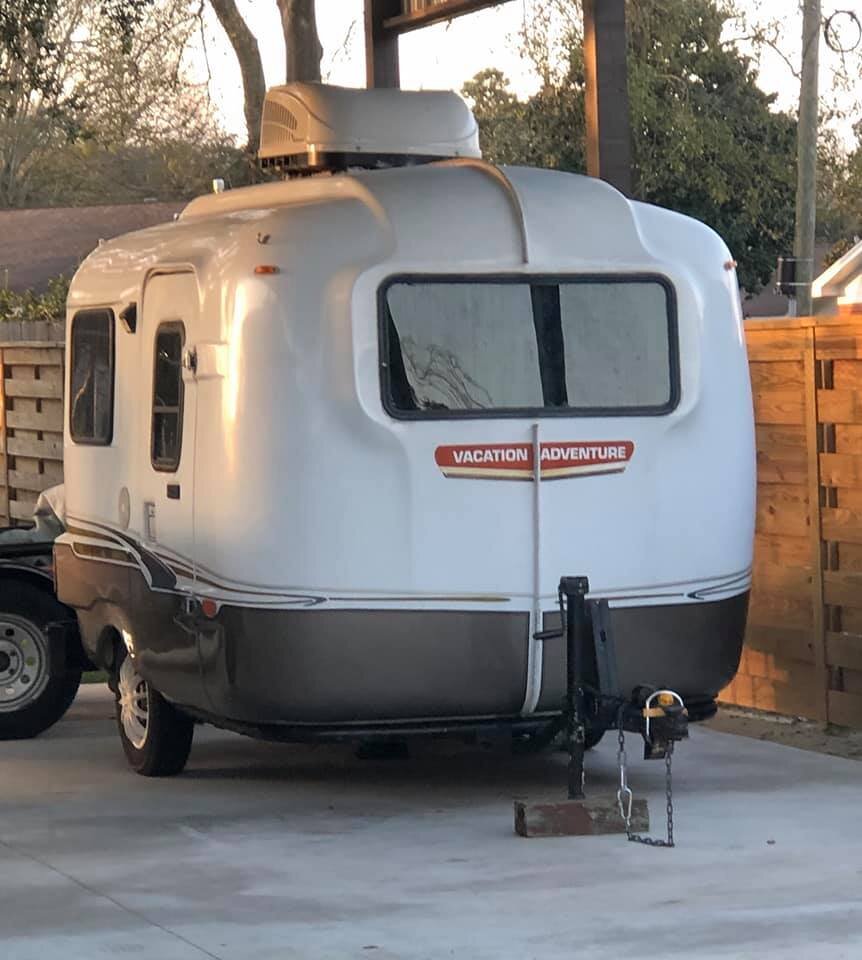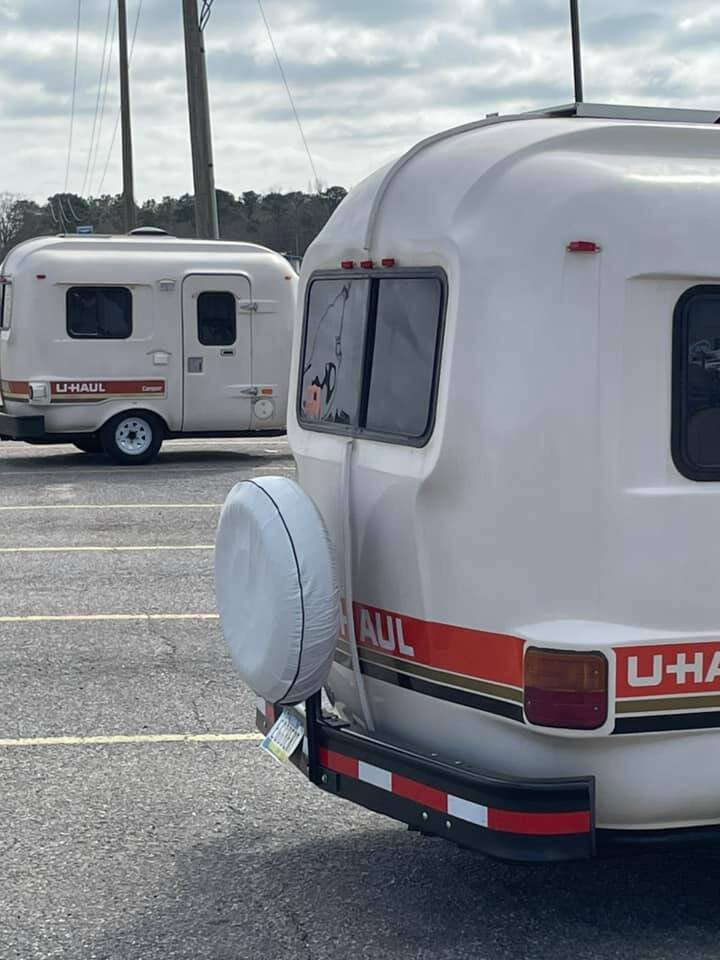Collectible U-Haul travel trailers
Travel trailers by U-Haul - collectible minis
U-Haul is a company that most Americans associate with moving day, one of the least pleasant days in any homeowner’s life. But they also built and rented travel trailers for a short while. From 1984-86 U-Haul actually built and rented two different travel trailers which are quite collectable and have a passionate fan base today.
Two models were built, a 13’ CT (Camp Trailer) and a 16’ VT (Vacation Trailer). The trailers were built specifically to U-Haul specifications by contract manufacturers throughout the US and used some proprietary U-Haul components and technologies. While it is known that the trailers were built from 1984-85 there are some whose initial title is as late as 1988. U-Haul had what they called the Rec Vee fleet until 1992 at which point the fleet was sold off to private buyers.
The main differences between the 1984 and 1985 production models is that the later ones use fiberglass cabinet liners in the upper cabinets over the sink/stove as well as the cabinets under the sink. There were also fiberglass storage liners for the seats under the front bench.
The grand tour
As mentioned there were two sizes of these but the vast majority built were the 13’ models. As you walk in to the right is a bench with a backrest. This backrest cleverly flips up so you have bunks for two. There are poles that go into the lower support boxes to support the upper bunk once it’s been flipped up.
Directly opposite the entry door is the galley which consists of a two-burner stove, a sink and an ice box which we now more commonly call a cooler, although this was built in. Next to the ice box is a cabinet and above the whole galley are additional cabinets.
As mentioned the 1984 models had unfinished cabinets inside but later models had liners which did take away some of the space but made cleaning so much easier.
The entire rear of the trailer is a dinette with a fiberglass table which sits on a pole. Take out that pole and you can use the backrest cushions to fill out the dinette for sleeping.
Lastly there’s a small utility closet opposite the galley. That’s the whole thing.
The 13’ CT trailers didn’t have a bathroom, per se, but a portable toilet did snug in between the front bunk’s pedestals. The 16’ VT trailers did have a wet bath but these trailers are extremely difficult to come by as it is speculated that fewer than 60 of these were ever built.
My sincere gratitude to the members of U-Haul Camper Facebook group for allowing me to share these photos with you.
Build quality
From what I can see the U-Haul trailers are very interestingly built with two-piece bodies but not like a Scamp or Casita where the bodies are formed of a top and bottom half. Instead it seems the trailers are made of a left and right half with an aluminum “rail” type of trim piece that covers the split down the middle.
The bodies were two layers with an inner and outer layer that featured an insulating air gap between the layers. According to Jim Garrecht, a long-time aficionado of these trailers, they were “built to survive the abuse of renters.” This is part of the reason they’re so collectible today, they were just built really sturdily.
Inside much of the surface is finished fiberglass but a large strip along the trailer’s center section was unfinished and had been covered in a carpeted strip about a foot wide.
Interestingly the U-Haul trailers sported an independent torsion axle suspension which provided a great ride and goes back to their build quality. The interior cabinets were originally an olive green interior made of plywood base over which the olive plastic was molded. The tables were originally made of fiberglass and, reportedly, these can get chipped over time.
One of the more advanced features of the trailers was the use of a 15 watt solar panel on the roof to keep the battery maintained between rentals. This is a pretty smart idea, especially when these trailers might sit at a rental facility for a while.
There was also a swamp cooler in some of these which works in dryer climates but where the humidity is already high, they do little. But it’s still an interesting idea.
Other fiberglass trailers
There is a lot of similarity between the U-Haul trailers and the Burro trailers and rumors persist that U-Haul simply bought the molds when Burro went out of business. Looking at the two trailers they are very, very similar right down to being built with a large vertical seam and carpeting along the interior roof and walls where that seam was.
The timeline doesn’t really support this, though as U-Haul built their trailers from 1984-85 and Burro continued building trailers until 1986.
Tales and lore
There are unsubstantiated stories that some of the managers who worked for U-Haul at the time were asked to take one of these trailers so U-Haul didn’t have to pay for their lodging while they were out and about.
Most of all U-Haul campers once had “Property of U-Haul” markings on the windows, frame, propane tank, rims, and even the tires. Although once sold off, the frame was stamped “NOT” before the “Property of U-Haul” on the frame.
Collectibility
One of the more difficult items to replace is the taillight lens which was unique to these little campers. Otherwise most things can either be found or reproduced rather easily. I would imagine that, if it hasn’t been done yet, someone’s going to copy an original taillight lens and use a 3D printer to make exact replicas sooner rather than later.
According to Jim Garrecht, U-Haul is well aware of the enthusiasm for these trailers and has even been helpful in sourcing parts from time to time. For example, when the company discovered a trove of parts in a warehouse for these they made them available to the group.
“U-Haul has been incredibly supportive,” said Garrecht.
There is also a very active group of enthusiasts for U-Haul trailers on Facebook.
Since the trailers were built to withstand the abuse of renters they’re tough little buggers and many of the components originally installed continue to function well. For example, Jim Garrecht told me that when he turned on the AC unit in a vintage U-Haul it still worked. Garrecht still finds that the original 15 watt solar panel and charging system on his trailer still function as new.
Interest in these trailers has also increased recently as they are being “discovered” through various social media posts and owners sharing their ownership experience.
U-Haul
At the time these were built U-Haul was still owned by the initial founder, Leonard Schoen. But it wasn’t a good time as Schoen had deeded all but two percent of his holdings in the company to his 12 children from various marriages.
By the mid 1980s U-Haul had expanded into renting all sorts of things, from paint sprayers to travel trailers as this TV commercial from the era demonstrates. Thus, in 1986, two of the Schoen children staged a hostile takeover of the company which resulted in a family dispute so extreme there was violence at the board meetings.
This was also the time the last of these travel trailers was manufactured although some were still being titled for the first time through 1988.
Having owned a B&B I can’t imagine the interruption travel trailers would have on the normal servicing of U-Haul equipment. In addition to regular cleaning there had to be additional efforts taken for kitchen facilities, holding tanks (although this was gray water only) and dealing with the portable toilets.
As such, U-Haul finally discontinued all their “Rec Vee” operations by 1992 and sold off the inventory to private owners. Since much of the U-Haul travel trailers were built for the company many, many of the items in the trailers were stamped with “Property of U-Haul.” As a pop culture tribute the company stamped the word “NOT” in front of this when the trailers were sold off. Funny thing, the term “NOT” was one of the 1992 Words of the Year according to the American Dialect Society.

